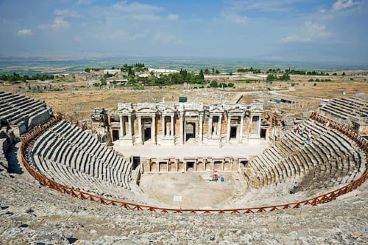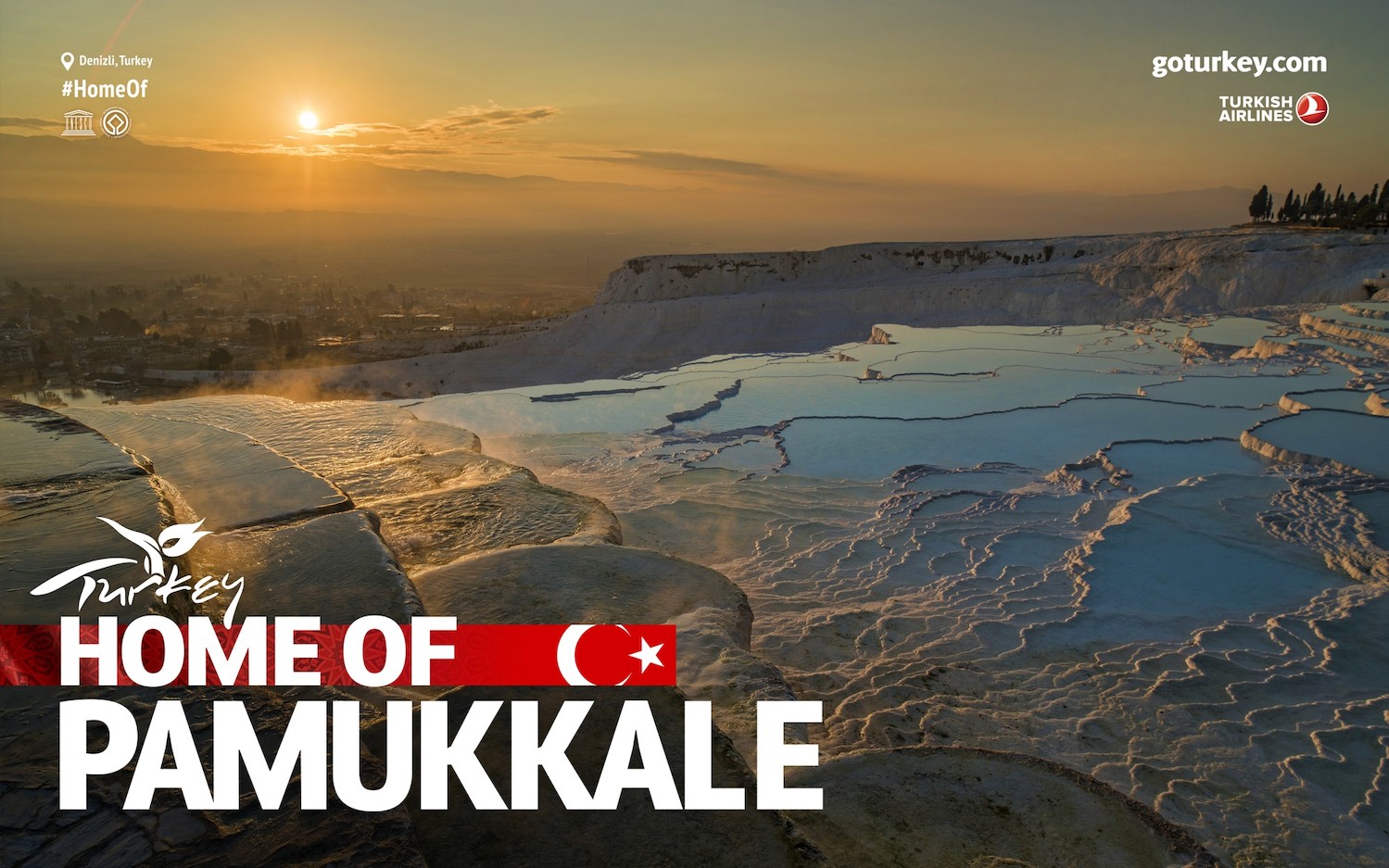
Nestled in the Denizli Province of southwestern Turkey, Pamukkale is a dream destination that enchants visitors with its surreal beauty and rich history. Translating to “Cotton Castle” in Turkish, this UNESCO World Heritage site is famous for its pristine white travertine terraces and the ancient city of Hierapolis. Whether you’re a nature enthusiast, a history buff, or a wellness seeker, Pamukkale offers an unforgettable experience.
The Mesmerizing Travertines

Pamukkale ’s iconic terraces are a natural phenomenon, formed by mineral-rich thermal waters flowing down the hillside for thousands of years. These waters deposit calcium carbonate, creating cascading pools that shimmer under the sunlight. Walking barefoot on these chalky white formations is not only a unique sensation but also a requirement to preserve their delicate structure. Visitors can soak their feet in the warm, therapeutic waters while admiring breathtaking views of the Menderes Valley.
While certain sections of the travertines are restricted to protect their integrity, designated areas allow for safe exploration. Don’t miss the opportunity to capture stunning photos of this otherworldly landscape.
Hierapolis: A Glimpse into Ancient Splendor

Above the travertines of Pamukkale lies Hierapolis, a Greco-Roman spa city established in the 2nd century BCE. Known for its healing thermal springs, Hierapolis attracted people from across the ancient world seeking rejuvenation. Today, the well-preserved ruins stand as a testament to its historic significance.
Key attractions in Hierapolis include:
- The Theatre: An awe-inspiring Roman theater with a seating capacity of 12,000, offering panoramic views and a glimpse into ancient entertainment.
- The Necropolis: One of Turkey’s largest ancient cemeteries, featuring tombs and sarcophagi that reflect diverse burial traditions.
- The Cleopatra Pool: Swim like royalty in this thermal pool, surrounded by submerged columns believed to date back to antiquity. Legend has it that Cleopatra herself bathed here.
Pamukkale by Night

Pamukkale’s beauty doesn’t fade with the setting sun. At night, the illuminated terraces exude an enchanting glow, creating a serene and magical atmosphere. Therefore A nighttime visit is perfect for those looking to escape daytime crowds and capture unforgettable photographs.
Practical Travel Information
- Best Time to Visit Pamukkale: Plan your trip during spring (April-May) or autumn (September-October) for pleasant weather and fewer tourists.
- Footwear Policy: Walking barefoot on the terraces is mandatory to protect their delicate surface, so wear easy-to-remove shoes.
- Stay Comfortable: Bring sunscreen, water, and a hat to shield yourself from the sun, especially in summer.
- Time Management: Allocate at least half a day to fully explore both the travertines and Hierapolis.
How to Reach Pamukkale
Pamukkale is easily accessible via Denizli, the nearest city with an airport located 65 kilometers away. From Denizli, you can take a taxi or a bus to the site. Many visitors also opt for guided tours from major cities like Istanbul, Antalya, or Izmir for a hassle-free experience. You can contact with Bosphorus Gate Travel Agency for more details.
Why Pamukkale Should Be on Your Bucket List
Pamukkale is more than just a natural wonder. Because it’s a harmonious blend of stunning landscapes, ancient history, and wellness. From the therapeutic waters of its travertines to the grandeur of Hierapolis, this destination offers something for everyone. Whether you’re soaking in Cleopatra’s Pool or marveling at the illuminated terraces at night, Pamukkale promises a magical experience that you’ll treasure forever.
Start planning your trip today and prepare to be captivated by Turkey’s Cotton Castle—a place where natural beauty and history unite in perfect harmony.

